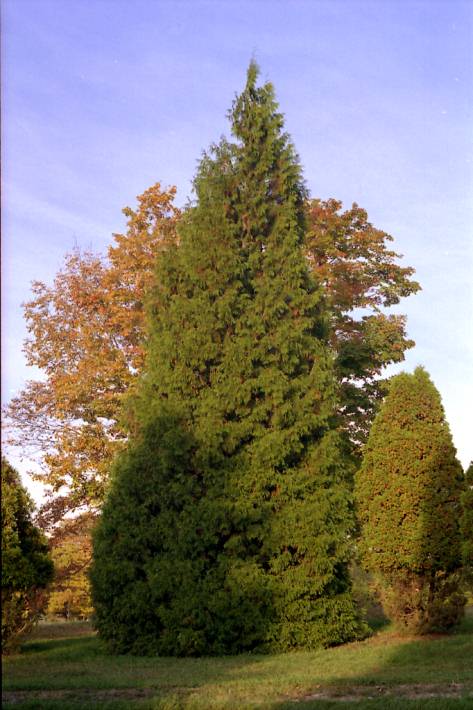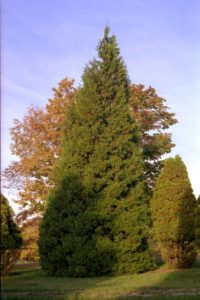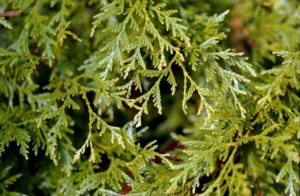
At a glance
Names
Latin (scientific) name: Thuja plicata
Common English name: Western Red Cedar
Other names: Western Thuja, Giant Arborvitae
French name: Thuya géant
Type

Coniferous
Plant Hardiness Zone
1a, 1b, 2a, 2b, 3a, 3b, 4a, 4b, 5a, 5b, 6a, 6b, 7a, 7b, 8a, 8b
Status

Native
Size at Maturity
60 meters
Life Expectancy
Very long-lived. Some have been aged at more than 1,000 years.
Where it grows
Plant Hardiness Zone
1a, 1b, 2a, 2b, 3a, 3b, 4a, 4b, 5a, 5b, 6a, 6b, 7a, 7b, 8a, 8b
Habitat
Native to the coastal forests and wetter parts of interior British Columbia. Shade Tolerant
Preferred Soil Type
moist
Distribution Across Canada
British Columbia
What it looks like
At Maturity

Very large trees, long tapering outline. Trunk buttressed at base.
Bark

Smooth and shiny maturing to rough and ridged. Shredding at maturity.
Leaf

Scale-like, opposite pairs, in four rows, one pair folded, other pair not folded, leaves overlap like shingles in flat sprays fanning out on the twigs. Very strong aroma.
Bud

Cone

Seed cones are ovoid, 1 centimetre long, with several pairs of scales. Pollen cones are small and a bit red in colour. Both born in clumps.
Other

Official arboreal emblem of British Columbia. The Northwest Coast First Nations peoples used all parts of the tree. Trunk is so resistant to decay that wood can be used a century after the tree has felled.
What affects it
Pests
Common diseases
Values and Uses
Edible fruit/nut tree?
No
Follow us on social media to keep up-to-date.
